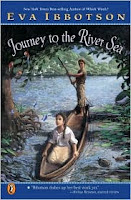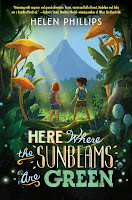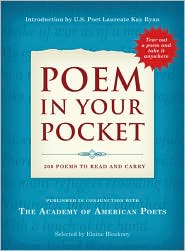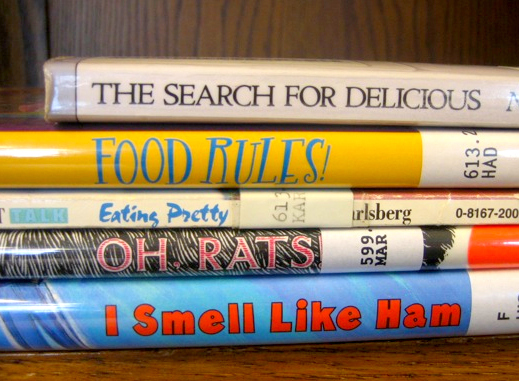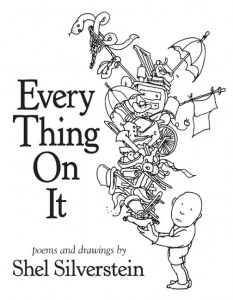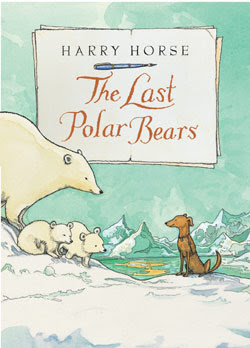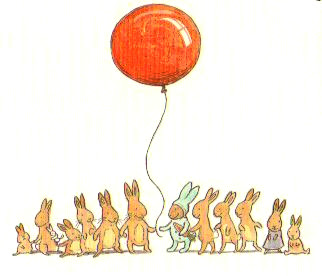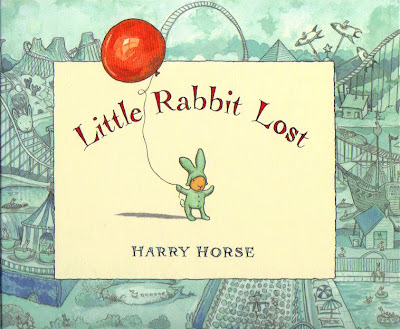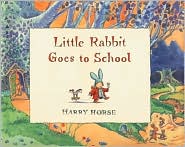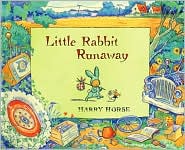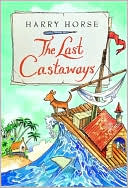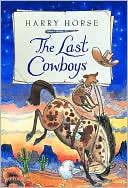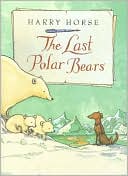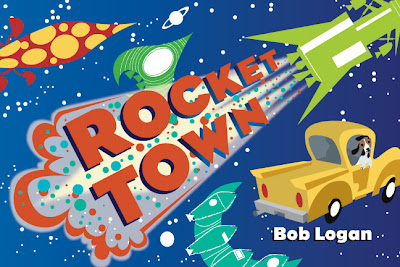
I LOVE THIS BOOK!!! Rocket Town by Bob Logan, who's day job is working as a story artist on feature animations for Dreamworks like Madagascar, Open Season and Cloudy with a Chance of Meatballs. Logan joins the good company of another animator/illustrator TonyFucile, author and illustrator of the picture book, Let's Do Nothing and illustrator (co-creator, really) of the beginning reader book by Kate DiCamillo and Alison McGhee, Bink and Gollie. I have often found that illustrators who also write have a tendency to produce really great books, perhaps because they can think visually and texturally (think Chris Van Allsburg, David Wiesner, David Selznick, Emily Gravett). An artist who comes from the world of animation has even more to bring to the world of picture books when it comes to visual story telling. Logan definitely exhibits this quality in his second book, Rocket Town, which is a BOARD BOOK! Yes, a board book! While I have seen plenty of gorgeous artwork in the board book format when traditional picture books are reissued as such, I have never seen such amazing illustrations created especially for this form. In Rocket Town it all fits together perfectly. Then there is the perfectly pertinent subject matter of the book to consider. As a parent of two, I can attest to the inherent love of rocket ships that boys, on the whole, seem to have. My youngest son learned to count backwards from ten to one before he learned to count from one to ten. And, as a bookseller, I can tell you that there are almost NO BOOKS ABOUT ROCKET SHIPS on the shelves, making Rocket Town all the more special.

Although the large "lap book" format is a new entry into the world of board books, they have mostly remained a standard small rectangular size over the years. Recently, though, some publishers have been using a sort of mid-sized format that really highlights the illustrator's artwork and is sometimes a bit more manageable for pudgy little hands. Rocket Town falls into this category, but without the usual price bump. And am I glad! The illustrations are spectacular and, while I would love to see them even larger, the pace and the story are perfectly suited to this size of the board book format.

On first read, the retro feel of Rocket Town reminded me a bit of Bob Staake's stylized, playfully kooky illustrations. However, as a Southern California native and frequent visitor to Disneyland, I also felt a bit like I was taking a ride on the old People Mover, which was a treat. Rocket Town begins with an astronaut and his faithful beagle jumping into their truck for a trip to Rocket Town.

Rockets are everywhere and Rocket Town is almost as much a seek-and-find (Look! There's baby-stroller-rocket! Look! There's a bicycle wheel made out of rockets!) as it is a story. As the astronaut and his pup drive through Rocket Town we are introduced to the various rockets that roam there.
As we reach the end of the book we see the astronaut buy a rocket of his own (which looks very much like his old yellow truck - nice tie-in there!) and, after a count down, of course, watch him BLAST OFF! Short and sweet, but so much more! I can't wait to see what Bob Logan does next!

But first, I am going to sit down with Bob Logan's first picture book, The Sea of Bath!



Follow this link to see how Logan creates an amazing shadowbox that he contributed to the opening of what looks like a super-cool gallery, QPop, located in Little Tokyo in the heart of Los Angeles.









